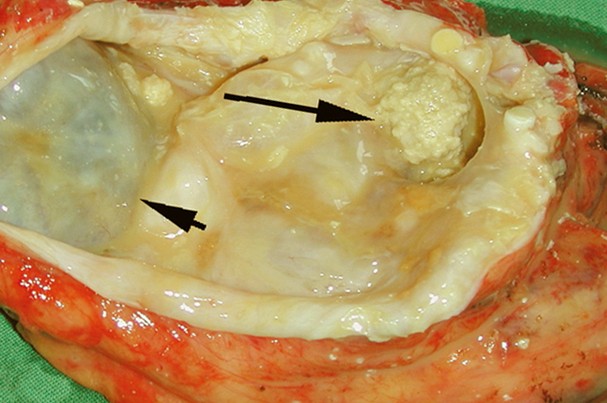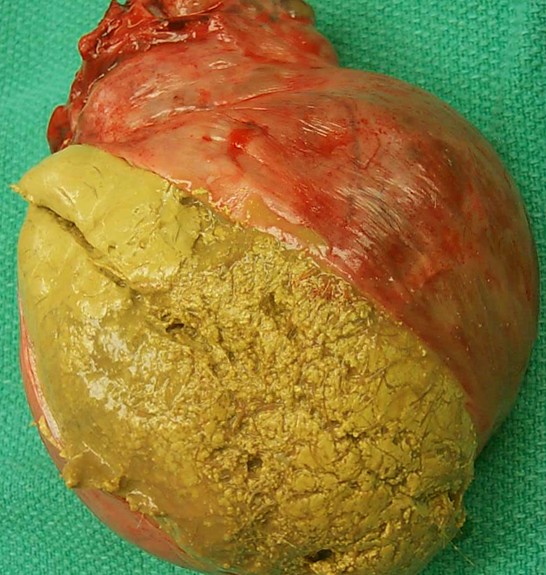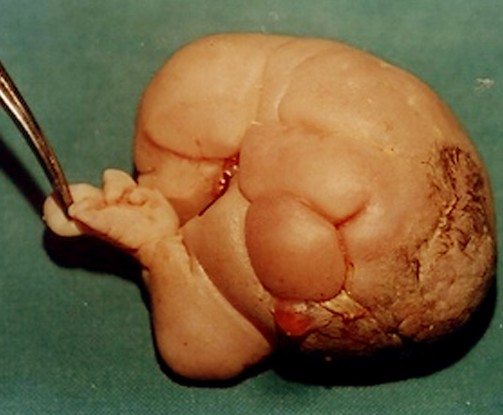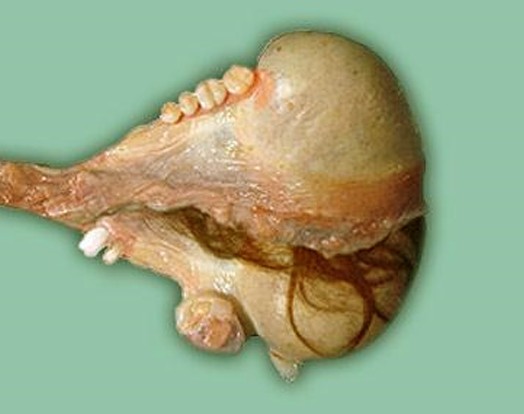What is Teratoma?
The teratoma is a tumor that is encapsulated and has either organ or tissue composition with a complete number of germ layers. There are a few cases wherein the three layers are impossible to identify. It is a congenital defect that has no known cause. Scientists have recently discovered that there might be some genetic significance that increases the likelihood of certain individuals to be born with this condition.
The name is derived from classic Greek and means “monstrous tumor”. These are common in humans but rarely found in other kinds of species.
There are cases in which the teratoma contained bone, hair and teeth. The oddest ones had eyes, limbs, hands, feet and even a torso. In most cases, there are no organs present but have tissues native to other organs like the lungs, liver, brain or thyroid. Within the outer capsule, there are single or multiple cysts filled with fluid. Some larger teratomas resemble a human fetus. The presence of the capsule increases the possibility that they are benign. The most common types are usually malignant.
A mature teratoma is benign most of the time and commonly occurs in women. An immature teratoma is commonly diagnosed to be malignant and typically arises in men. To find out if it is benign or malignant, one would have to base it on its histological components. A pathologist is called to do a biopsy of the sample.
A malignant teratoma is termed a nonseminomatous germ cell tumor (NSGCT). This results from abnormalities of germ and embryonal cells. The embryonic types are congenital in nature while those originating from the germ cell may not be. They are usually spotted in the ovaries of females and the testes of males. Embryonic teratomas are commonly found on the midline area of the patient. Usual places are the brain, other areas in the skull, inside the nose and on or under the tongue. Of the ones found in sutures, roughly 50 percent are situated in the orbital area.
The cervical teratoma is common to the neck area. Presences of these tumors have also been found in the retroperitoneum, mediastinum and the coccyx. Some cases will present themselves in organs like the heart or the liver. Teratomas have also been found in hollow organs like the gastrointestinal tract (stomach) and in the bladder. The most common one is the sacrococcygeal teratoma. It is found in newly born children.
The mature teratoma can come in diverse forms and histological content. They may contain variable types of skin, bone and muscle. The teratoma of this type is usually benign. There are also those called dermoid cysts. This is made up of hair and considered to be both mature and cystic. It is usually seen in skull sutures and in the ovaries of women. It is composed of both ectoderm and skin.
Teratoma Symptoms
Lump
This is a raised area or protuberance that has a localized area of swelling. It can be a bump, nodule, contusion, cyst or tumor. They can be caused by many reasons. A few of which are infections, tumors, inflammations or trauma. They may grow or change in size. Traumatic causes may be derived from insect bites or hematomas. Benign and malignant tumors may feel like a bump. A biopsy or surgical removal should be done to determine the histologic significance of the lump.
Pain
It is a sensation that hits us when our nervous system responds to bodily trauma or damage. The feeling can be short-lived or chronic. There are several types like achy, dull, sharp, stabbing, shooting, burning or tingling. They can be visceral, neuropathic, chronic, cancer, referred or acute. There are countless conditions that may cause pain. They range from inflammation, malignancies, trauma or infections.
Inflammation
* This is brought along by histologic changes due to pathologic reasons. The cardinal signs related to inflammation are redness, swelling, heat, pain and loss of function. These can be observed but not necessarily all together.
- Tenderness
- The occurrence of the sensation of pain during palpation of an area.
- Swelling or Edema
- It can be a sign of excess build-up of fluid or inflammation. The area may look distended or irregular.
Teratoma Causes
There are no known causes of this tumor. Scientists are still undergoing rigorous research to clarify if it is indeed an inherited trait. The fetus in fetu or feriform teratoma may be some sort of a parasitic kind of twin and not an actual teratoma.
http://www.Symptoms-Causes-treatment.blogspot.com detect diseases at an early stage symptoms, and find out the causes and treatments best suited.
Grade or Classification of the Teratoma
There is a specific grading system for these tumors. It is classified by way of cancer staging. This will help determine the kind of treatment required. The method of classification is termed the Gonzalez-Crussi system.
0 – Mature or benign
1 – Immature but usually benign
2 – Immature but could be malignant
3 – Frankly malignant
If a biopsy registers it a 3, the tumor can be classified by content. Solid teratomas are made up of only tissues and possibly a few structures that are complex. The cystic teratoma contains fluid or semi-fluid pockets like CSF (cerebrospinal fluid), fat or sebum. Those that are composed of solid and cystic elements are termed a mixed teratoma.
A grade 0 tumor can still become malignant. The risk increases if it is recurrent by nature. Therefore, it comes back after it is removed.
Since teratomas are considered to be present at the time of delivery, these are considered to be congenital. Many of these are not diagnosed until the child is older. Only large teratomas are easy to spot and therefore gain attention at an earlier time. There are ways to diagnose it. These include Pre-natal MRI and ultrasound. It may cause death in the fetus due to a phenomenon called a vascular steal. This happens when the teratoma has a vascular supply which competes with the fetus and leads to death by way of heart failure. These cases will require fetal surgery. The unborn child would have to be monitored by a fetal echocardiography.
Teratoma Treatment
Surgical Removal
Surgery is a popular choice. This will call for complete resection of the area. The surgeon will usually prefer not to remove the tissue around the teratoma. This is because it is well-encapsulated and that helps prevent possible recurrence. This procedure cannot be done in brain teratomas because the area will usually push into other structures and musculature.
Chemotherapy
This is performed on patients with malignant teratomas. These types usually progress because they were discovered too late. This procedure is commonly a prelude to surgery.
Teratoma Pictures



